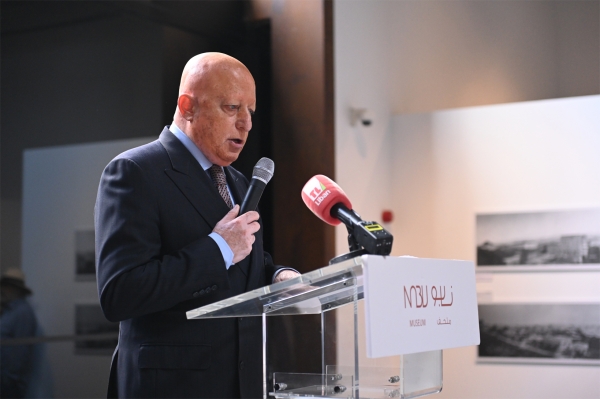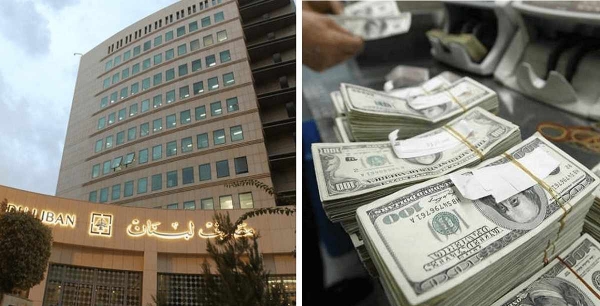Mental Health Challenges in Lebanon
What mental illnesses are most prevalent in Lebanon?
According to a study by the Lebanese Medical Institute for Neuropsychological Disorders (MIND), 16.7% of mental disorders are anxiety related, and 12.6% are related to mood changes. Moreover, research undertaken by Professor of Clinical Psychology Elie G. Karam, suggests that 10% of the Lebanese population experience post-traumatic stress disorder (PTSD).
In the context of Lebanon, a significant correlation is found between war-related events and the incidences of PTSD. The reoccurrence of violence coupled with political instability and the lack of economic opportunities continuously supply renewed tension that can aggravate the mental state of a person. Social anxiety, depression, and PTSD are therefore thought to be the most serious mental illnesses suffered by the Lebanese population.
Conditions of Mental Health Care
The components of the mental health care system in Lebanon remain incapable of addressing the mental health problems that are endemic in the country. More importantly, the cultural taboo surrounding mental disorders inhibits people not only from treating their illness, but also from the recognition of their condition. This is paralleled with a lack of interest on the doctors’ part, as very few practitioners exist in this field. Consequently, research publications relating to mental health compose only 5% of all health research in the country. This factor, among others, has kept mental health care services very basic.
Today, only three mental hospitals exist in Lebanon, and five psychiatric health units are found in other hospitals in the country. The largest of these mental hospitals contains 1 200 beds, and the average length of stay for patients is 279 days per year. 47% of patients admitted to mental hospitals are diagnosed with schizophrenia, 12% with mood disorders, 10% with substance abuse, 9% with personality disorders, 3% with neurotic disorders, and 19% have other disorders (WHO).
In a 2010 World Health Organization report on the mental health system in Lebanon, the number of practicing psychiatrists in the country was two for every 100 000 people. For the same number of people there are 42 beds in psychiatric hospitals, with 5% of those being reserved for children and adolescents. However, according to the same report, the majority of psychiatrists work in outpatient facilities as opposed to working in mental hospitals.
Socio-cultural factors:
The socio-cultural factors that influence a person’s character and therefore the way he carries out his life are absorbed differently according to every individual. Reactions to incidents such as violent conflict, theft or rape could be incited by a set of circumstances such as the intensity of the attack, its duration and repetitiveness, and the personal traits of the people experiencing them. For this reason, highlighting environmental aspects as determinants of mental illness or disorders is risky.
It can be said, however, that certain occurrences or conditions will always have some sort of psychological toll on the people experiencing them. For example, displacement, physical abuse, and violence- which all remain frequent in Lebanon- will inflict at least minimal, if not significant, changes on one’s personality. Over the 15 years of civil war that the country has known, 200 000 people were killed and 17 000 went missing. Moreover, a large number of people have been displaced from their homes while fleeing violence.
According to an urban planner Mona Fawaz, the number of people displaced during the civil war was between 700 000 and 900 000. Simultaneously, residents have also seen their homes damaged or destroyed in the conflict. The table below demonstrates the number of demolished houses in different regions at the end of the war.
|
Number of houses destroyed in the civil war by region |
|||||
|
Region |
Partially Destroyed |
Totally Destroyed |
Damaged |
Total |
Percentage |
|
Mount Lebanon |
6410 |
14778 |
4630 |
25818 |
57.35% |
|
South |
4424 |
4845 |
3231 |
12500 |
27.77% |
|
Beirut |
573 |
2576 |
344 |
3493 |
7.76% |
|
North |
673 |
1053 |
499 |
2225 |
4.94% |
|
Bekaa |
235 |
409 |
340 |
984 |
2.19% |
|
Total |
12315 |
23661 |
9044 |
45020 |
100.0% |
|
% |
27.35% |
52.56% |
20.09% |
100.0% |
|
*Ministry of Displaced 1996 (note that these numbers refer only to houses registered in the ministry)
An array of social problems can be associated with displacement as such; absence of integration to new surroundings, alienation, and the emotional strain of losing a home or loved ones in the process. Other wars have also triggered waves of internal displacement such as the 1996 Israeli attacks, and the July war in 2006. In the first case, UNHCR estimated that the number of people leaving their homes in the south was between 400 000 and 600 000. In 2006, the number of people displaced within the country was around 750 000, and another 250 000 people fled to neighboring Syria. Upon return- for those who did return- the threat of Israeli violence lingered, as well as the risk of having to live with 138 246 unexploded ordinances in their surroundings.
The tolls of war do not end with this displacement; its subliminal impact runs deep into a nation’s memory through other ordeals such as physical injuries- especially in severe cases- and the fear and anxiety associated with living in a violent and unstable atmosphere. Many families today still struggle to live with the death of one or more of their members, and others continue to search for their missing sons and daughters; a pursuit that is likely to influence the mindset of concerned families.
Unemployment and Immigration
The economic situation in the country resulting from years of war touches individual lives as well as that of Lebanon as a whole. Today, unemployment figures are at around 10%, a big source of anxiety and depression, especially among the youth. Many are even forced to leave the country in order to find a better source of income. The country has therefore known several waves of immigration throughout its history. According to a study by Information International, the number of immigrants between the years 1991 and 2000 averaged 13 800 immigrants per year. Nowadays, the actual number of people holding the Lebanese nationality and living outside Lebanon is around 1 million.
According to a UNDP research paper titled “Immigration and Human Development: Evidence from Lebanon”, 75% of people between the ages of 18 and 35 said that employment in Lebanon would prevent them from leaving the country. On the other hand, 45% of them also said that the security situation in the country was a main factor for leaving.
The link between the anxiety factor associated with a violent setting and the trends of migration are evident. During the Lebanese civil war for example, it is estimated that 990 000 people left the country to find a better life abroad. As with internal displacement, this also bears an emotional strain and potential problems of adaptation and integration.
Women and Children’s Safety in Lebanon
Issues that influence one’s psychological development extend farther than matters relating to war and violence and extend of course into the realm of the home and the family. In Lebanon, as is common in Arab cultures, strict disciplining of children remains rarely addressed outside the realm of the family. This is generally because violence against children is seen as a somewhat acceptable manner of teaching obedience. According to the Lebanese NGO Kafa, 40.8% of children are subjected to different degrees of violence in their homes, and 64.9% suffer from psychological abuse.
By September 2012, the Ministry of Social Affairs reported that 850 cases of child abuse had been received from the start of the year. This is not representative of the actual number of abuse that is taking place because children and/or their families hardly ever report it either for fear of embarrassment or because they fail to see what is wrong with the abuse. Studies by Kafa revealed that 16% of children between the ages of 8 and 11 experience some form of sexual abuse, and that 55.8% of these cases happen at home.
Similarly, domestic abuse of women by male members of their families is still quite prevalent. Estimates of the percentage of women who have experienced domestic violence within their home at some point in their lives are as high as 75%.
Tranquilizers
Against the backdrop of continuous social, political and security turmoil, it is no surprise to find the Lebanese flocking into pharmacies to buy tranquilizers or anti-anxiety pills, sometimes with prescription and often without it.
Self-diagnosis has become a common trend among the Lebanese who prefer to take the matters into their own hands instead of going through the process of medical visits and prescriptions, which are often more costly and time-consuming. Unlike Western and European countries, Lebanon remains lenient in the enforcement of the laws and policies regulating medical practice and drug sale.
According to the Lebanese Syndicate of Pharmacies, the Lebanese have consumed in 2011 around 1 million tranquilizers and 642 000 anti-depressant pills in a bid to handle the stress imposed by everyday life. The staggering numbers expose the seriousness of the situation and the urgency of intervention to curb further deterioration in mental health.
A Challenging Environment
Constant exposure to stressful situations is of course not exclusive to life in Lebanon, but it is however amplified, especially with the assassinations (page 11), the prevalence of crime (page 15), the crisis of the foreign labor force (page 17) and the prostitution (page 19), which are all signs attesting to far-reaching implications on mental health.
At a time where the psychological toll seems trivial in the face of the physical and material costs incurred by the economic and security conditions, it is important to remember that one’s emotional and mental health are incremental to individual’s progress. With this consideration in mind, a step needs to be taken towards initiating a mental health care policy in Lebanon. Moreover, schools and educational institutions can take on the responsibility of spreading awareness and alternating the view on mental illness among future generations. The lack of mental health services can only be addressed once mental disorders are approached as any other medical condition.
“47% of patients admitted to mental hospitals are diagnosed with schizophrenia, 12% with mood disorders, 10% with substance abuse, 9% with personality disorders, 3% with neurotic disorders, and 19% have other disorders (WHO).“
Mental Health Care Provision in Lebanon
Lebanon’s health care system has often been praised as the region’s best, with highly reputable institutions and practitioners. Yet our health sector has overlooked a major cornerstone; one that is inexcusable in light of the country’s social and political instability. Today, mental health is seldom addressed in Lebanon, a country with years of war and economic hardship. Only a minimal number of practitioners are available, with a very small number of funds allocated to mental health care from public expenditures. This then creates a situation where factors leading up to mental disorders are ample, but where services available for the treatment of these illnesses are scarce.
A number of studies have shown that though underestimated, mental illnesses are very much prevalent in Lebanon with the two main ailments being depression and post-traumatic stress disorder (PTSD). To begin with, a survey conducted in the early 1990s, soon after the end of the civil war, revealed that a staggering 96% of children aged 3 to 16 had experienced at least one traumatic incident in their life (referenced in Chahine and Chemaly, 2009). Moreover, the World Health Organization Mental Health Survey Initiative discovered that in 2006, and prior to the July war with Israel, 49% of the population had been through traumatic experiences related to war, and that an additional 17% suffered from other mental disorders. Finally, a 2008 study by renowned Lebanese psychiatrist Dr. Elie Karam, found that the lifetime prevalence of mood disorders in Lebanon was one and a half times longer than their counterparts in Iraq (thelancet.com).
The repeated occurrences of wars and violent conflict have thus proved to have a direct correlation with the mental health of the population. The Syndicate of Pharmacies revealed that in 2011 the most medications sold in Lebanon were tranquilizers and anti-depressants. And although wars are only occasional, other factors pertaining to life in Lebanon further exacerbate the situation. Unemployment and youth unemployment, immigration, the standard of living and inflation- among others- can serve as direct and indirect contributors to the deterioration of mental health.
The pervasiveness of mental disorders in Lebanon is paralleled with the inability of the medical system to accommodate them. To begin with the public sector, to date, there is not a policy on mental health care provision. Within the Ministry of Public Health, there is no division or bureau that is responsible for mental health issues and there are no procedures for referring patients from general health care to secondary psychiatric health care. 9.5% of government expenditure goes to spending on health. According to the World Health Organization Mental Health Atlas, only 4.8% of government health expenditure is allocated to mental health, of which 54.17% goes to maintaining psychiatric hospitals. This indicates that little is being done to develop human resources and train professionals that are able to adequately address the problems of their patients. The Mental Health Atlas also indicates that for every 100,000 Lebanese, there are 1.41 psychiatrists, and 2.12 psychologists. At the time of writing, the Lebanese Psychiatric Society listed 51 registered psychiatrists.
The majority of patients resort to private health care. But even there the number of specialized practitioners is very low, and the cost of treatment very high. Private insurance companies do not cover mental illnesses in Lebanon. While the National Social Security Fund does cover these illnesses, many hospitals are still not in agreement with it, and therefore attending patients will not get coverage. Thus patients themselves make most payments for treatments. Consequently, the WHO estimated in 2011 that about 70% of people with mental illnesses do not receive treatment.
Apart from the shortcomings of the health sector, the lack of awareness among patients themselves also hinders their reception of care. This is primarily related to the inability of detecting symptoms that might indicate any mental illness. In addition to that, if and when a patient comes to the realization that he might be in need of help, social and cultural factors may prevent him from seeking professional care. This cultural factor revolves around the fear of stigma as societies across the Arab world still associate mental illnesses with negative connotations such as insanity.
It is very surprising that a country that in modern times has suffered from a number of wars does not provide for a comprehensive mental health care system. While other concerns such as economic conditions and physical health are granted due significant importance, mental health care should not be undermined. A comprehensive program should be put in place to tackle the weakness of the mental health sector. From a policy perspective, funding could be directed to providing incentives to physicians specializing in psychiatry and towards countrywide awareness campaigns. On the community level, awareness can start with youngsters at schools and even continue to reach the older generations through community campaigns. Any funding would appear futile if it is not accompanied with the proper awareness that will help people get rid of the negative connotations attributed to mental illness issues.








Leave A Comment